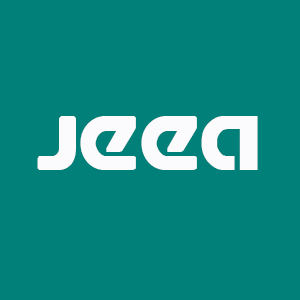REFERENCES
1. European Commission. Regulation (EC) No 1907/2006 of the European Parliament and of the Council of 18 December 2006 concerning the Registration, Evaluation, Authorisation and Restriction of Chemicals (REACH), establishing a European Chemicals Agency, amending Directive 1999/45/EC and repealing Council Regulation (EEC) No 793/93 and Commission Regulation (EC) No 1488/94 as well as Council Directive 76/769/EEC and Commission Directives 91/155/EEC, 93/67/EEC, 93/105/EC and 2000/21/EC. 2006. https://eur-lex.europa.eu/eli/reg/2006/1907/oj/eng. (accessed 11 Jun 2025).
2. Huerta, B.; Rodriguez-Mozaz, S.; Lazorchak, J.; et al. Presence of pharmaceuticals in fish collected from urban rivers in the U.S. EPA 2008-2009 National Rivers and Streams Assessment. Sci. Total. Environ. 2018, 634, 542-9.
3. Ngo, H. T. T.; Nguyen, T. D.; Nguyen, T. T. H.; Le, T. T.; Nguyen, D. Q. Adverse effects of toxic metal pollution in rivers on the physiological health of fish. Toxics 2022, 10, 528.
4. Ogeleka, D. F.; Ogbomida, E. T.; Tongo, I.; Enuneku, A. A.; Ikpesu, T. O.; Ezemonye, L. I. N. Impacts of acute exposure of industrial chemicals and of fish (Tilapia Guineensis) pesticides on the survival of fish (Tilpia Guineensis) and earthworms and earthworms. J. Xenobiot. 2016, 6, 5660.
5. Carreira, B. M.; Kolář, V.; Chmelová, E.; et al. Bioaccumulation of chemical elements at post-industrial freshwater sites varies predictably between habitats, elements and taxa: a power law approach. Sci. Total. Environ. 2023, 901, 165794.
6. Muir, D.; Simmons, D.; Wang, X.; et al. Bioaccumulation of pharmaceuticals and personal care product chemicals in fish exposed to wastewater effluent in an urban wetland. Sci. Rep. 2017, 7, 16999.
7. Morrissey, C.; Fritsch, C.; Fremlin, K.; et al. Advancing exposure assessment approaches to improve wildlife risk assessment. Integr. Environ. Assess. Manag. 2024, 20, 674-98.
8. Ebinghaus, R.; Barbaro, E.; Bengtson, Nash., S.; et al. Berlin statement on legacy and emerging contaminants in polar regions. Chemosphere 2023, 327, 138530.
9. Bargagli, R.; Rota, E. Environmental contamination and climate change in Antarctic ecosystems: an updated overview. Environ. Sci. Adv. 2024, 3, 543-60.
10. Corsolini, S.; Romeo, T.; Ademollo, N.; Greco, S.; Focardi, S. POPs in key species of marine Antarctic ecosystem. Microchem. J. 2002, 73, 187-93.
11. Cincinelli, A.; Martellini, T.; Pozo, K.; Kukučka, P.; Audy, O.; Corsolini, S. Trematomus bernacchii as an indicator of POP temporal trend in the Antarctic seawaters. Environ. Pollut. 2016, 217, 19-25.
12. Pala, N.; Vorkamp, K.; Bossi, R.; et al. Chemical threats for the sentinel Pygoscelis adeliae from the Ross Sea (Antarctica): Occurrence and levels of persistent organic pollutants (POPs), perfluoroalkyl substances (PFAS) and mercury within the largest marine protected area worldwide. Sci. Total. Environ. 2024, 947, 174562.
13. Dickhut, R. M.; Cincinelli, A.; Cochran, M.; Ducklow, H. W. Atmospheric concentrations and air-water flux of organochlorine pesticides along the Western Antarctic Peninsula. Environ. Sci. Technol. 2005, 39, 465-70.
14. Bigot, M.; Hawker, D. W.; Cropp, R.; et al. Spring melt and the redistribution of organochlorine pesticides in the sea-ice environment: a comparative study between Arctic and Antarctic regions. Environ. Sci. Technol. 2017, 51, 8944-52.
15. Cabrerizo, A.; Dachs, J.; Barceló, D.; Jones, K. C. Climatic and biogeochemical controls on the remobilization and reservoirs of persistent organic pollutants in Antarctica. Environ. Sci. Technol. 2013, 47, 4299-306.
16. Corsolini, S.; Baroni, D.; Martellini, T.; Pala, N.; Cincinelli, A. PBDEs and PCBs in terrestrial ecosystems of the Victoria Land, Antarctica. Chemosphere 2019, 231, 233-9.
17. Armitage, J. M.; Quinn, C. L.; Wania, F. Global climate change and contaminants - an overview of opportunities and priorities for modelling the potential implications for long-term human exposure to organic compounds in the Arctic. J. Environ. Monit. 2011, 13, 1532-46.
18. Nadal, M.; Marquès, M.; Mari, M.; Domingo, J. L. Climate change and environmental concentrations of POPs: a review. Environ. Res. 2015, 143, 177-85.
19. European Commission. Water Framework Directive (WFD) 2000/60/EC: Directive 2000/60/EC of the European Parliament and of the Council of 23 October 2000 establishing a framework for Community action in the field of water policy. 2000. https://eur-lex.europa.eu/eli/dir/2000/60/oj/eng. (accessed 11 Jun 2025).
20. Hays, H.; LeCroy, M. Field criteria for determining incubation stage in eggs of the common tern. Wilson. Bull. 1971, 83, 425-9. https://sora.unm.edu/sites/default/files/journals/wilson/v083n04/p0425. (accessed 11 Jun 2025).
21. Rϋdel, Η.; Uhlig, S.; Weingartner, ΜP. Guidelines for sampling and sample processing. Version 2.0.0. 2008. Fraunhofer ΙΜΕ, Sch mallenberg, Germany and German Environment Agency, Dessau-Rosslau, Germany. https://www.umweltprobenbank.de/upb_static/fck/download/IME_SOP_Probenvorbereitung_Dez2008_V200.pdf. (accessed 11 Jun 2025).
22. Gkotsis, G.; Nika, M. C.; Nikolopoulou, V.; et al. Assessment of contaminants of emerging concern in European apex predators and their prey by LC-QToF MS wide-scope target analysis. Environ. Int. 2022, 170, 107623.
23. Mohammed Taha, H.; Aalizadeh, R.; Alygizakis, N.; et al. The NORMAN Suspect List Exchange (NORMAN-SLE): facilitating European and worldwide collaboration on suspect screening in high resolution mass spectrometry. Environ. Sci. Eur. 2022, 34, 104.
24. European Commission. Commission Directive 2009/90/EC of 31 July 2009 laying down, pursuant to Directive 2000/60/EC of the European Parliament and of the Council, technical specifications for chemical analysis and monitoring of water status (Text with EEA relevance). 2009. https://eur-lex.europa.eu/eli/dir/2009/90/oj/eng. (accessed 11 Jun 2025).
25. Alygizakis, N. A.; Oswald, P.; Thomaidis, N. S.; et al. NORMAN digital sample freezing platform: a European virtual platform to exchange liquid chromatography high resolution-mass spectrometry data and screen suspects in “digitally frozen” environmental samples. TrAC. Trends. Anal. Chem. 2019, 115, 129-37.
26. Aalizadeh, R.; Alygizakis, N. A.; Schymanski, E. L.; et al. Development and application of liquid chromatographic retention time indices in HRMS-based suspect and nontarget screening. Anal. Chem. 2021, 93, 11601-11.
27. Renieri, E.; Alegakis, A.; Kiriakakis, M.; et al. Cd, Pb and Hg Biomonitoring in Fish of the Mediterranean Region and Risk Estimations on Fish Consumption. Toxics 2014, 2, 417-42.
28. Bargagli, R. Trace metals in Antarctica related to climate change and increasing human impact. Rev. Environ. Contam. Toxicol. 2000, 166, 129-73.
29. Rudolph, I.; Chiang, G.; Galbán-Malagón, C.; et al. Persistent organic pollutants and porphyrins biomarkers in penguin faeces from Kopaitic Island and Antarctic Peninsula. Sci. Total. Environ. 2016, 573, 1390-6.
30. Sundkvist, A. M.; Olofsson, U.; Haglund, P. Organophosphorus flame retardants and plasticizers in marine and fresh water biota and in human milk. J. Environ. Monit. 2010, 12, 943-51.
31. Mangano, M. C.; Sarà, G.; Corsolini, S. Monitoring of persistent organic pollutants in the polar regions: knowledge gaps & gluts through evidence mapping. Chemosphere 2017, 172, 37-45.
32. Galbán-Malagón, C. J.; Del Vento, S.; Berrojalbiz, N.; Ojeda, M. J.; Dachs, J. Polychlorinated biphenyls, hexachlorocyclohexanes and hexachlorobenzene in seawater and phytoplankton from the Southern Ocean (Weddell, South Scotia, and Bellingshausen Seas). Environ. Sci. Technol. 2013, 47, 5578-87.
33. Cipro, C. V. Z.; Colabuono, F. I.; Taniguchi, S.; Montone, R. C. Persistent organic pollutants in bird, fish and invertebrate samples from King George Island, Antarctica. Antarct. Sci. 2013, 25, 545-52.
34. European Parliament and of the Council. Directive 2013/39/EU of the European Parliament and of the Council of 12 August 2013 amending Directives 2000/60/EC and 2008/105/EC as regards priority substances in the field of water policy Text with EEA relevance. 2013. https://eur-lex.europa.eu/eli/dir/2013/39/oj/eng. (accessed 11 Jun 2025).
35. Helsinki Commission - Baltic Marine Environment Protection Commission. Dioxins in the Baltic Sea. 2004. https://helcom.fi/wp-content/uploads/2019/08/Dioxins-in-the-Baltic-Sea.pdf. (accessed 11 Jun 2025).
36. European Union. PolyBDEs EQS dossier 2011. https://circabc.europa.eu/sd/a/d07ed9f5-0760-4561-b642-04bc1e4a580e/PBDE%20EQS%20dossier%202011.pdf. (accessed 11 Jun 2025).
37. Poma, G.; Volta, P.; Roscioli, C.; Bettinetti, R.; Guzzella, L. Concentrations and trophic interactions of novel brominated flame retardants, HBCD, and PBDEs in zooplankton and fish from Lake Maggiore (Northern Italy). Sci. Total. Environ. 2014, 481, 401-8.
38. Malarvannan, G.; Belpaire, C.; Geeraerts, C.; Eulaers, I.; Neels, H.; Covaci, A. Organophosphorus flame retardants in the European eel in Flanders, Belgium: Occurrence, fate and human health risk. Environ. Res. 2015, 140, 604-10.
39. Sühring, R.; Möller, A.; Freese, M.; et al. Brominated flame retardants and dechloranes in eels from German Rivers. Chemosphere 2013, 90, 118-24.
40. NORMAN Association. NORMAN Ecotoxicology database - Lowest PNECs. https://www.norman-network.com/nds/ecotox/lowestPnecsIndex.php. (accessed 11 Jun 2025).
41. Ng, K.; Alygizakis, N.; Nika, M. C.; et al. Wide-scope target screening characterization of legacy and emerging contaminants in the Danube River Basin by liquid and gas chromatography coupled with high-resolution mass spectrometry. Water. Res. 2023, 230, 119539.
42. NORMAN Association. NORMAN Substance Database - NORMAN SusDat. https://www.norman-network.com/nds/susdat/. (accessed 11 Jun 2025).
43. Alygizakis, N.; Lestremau, F.; Gago-Ferrero, P.; et al. Towards a harmonized identification scoring system in LC-HRMS/MS based non-target screening (NTS) of emerging contaminants. TrAC. Trends. Anal. Chem. 2023, 159, 116944.







